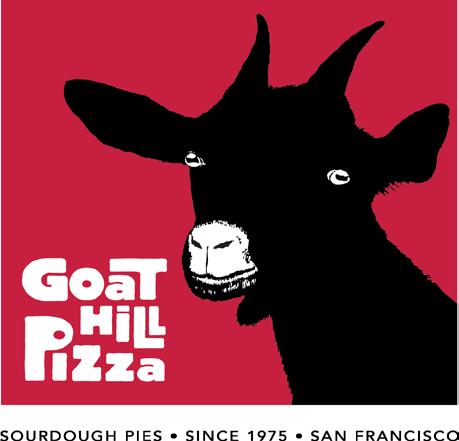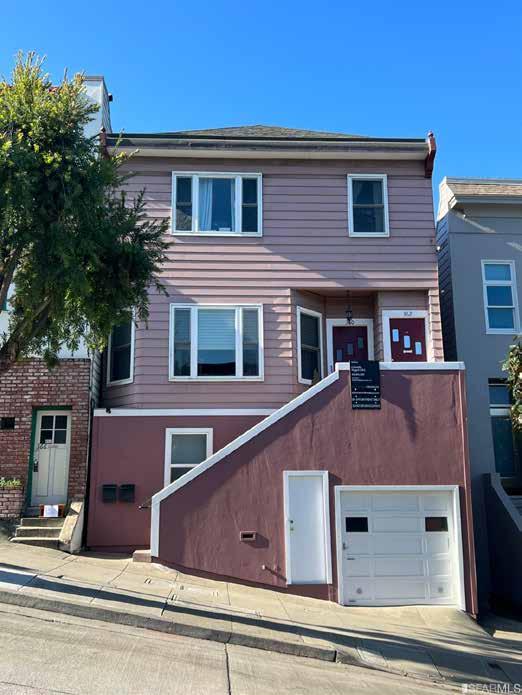
7 minute read
San Bru no Avenue Project Reconsidered as Affordable Housi ng
BY REBEKAH MOAN
The proposed development of 1458 San Bruno Avenue has been paused while an undisclosed group in the Mission is determining whether they want to turn the project into a 100 percent affordable housing complex, according to the property’s chief spokesperson, Chris Goode.
Advertisement
The Goode family has owned the property, located at the southern tip of San Bruno Avenue, abutting Potrero del Sol Park, since 1927. In 2019, the family proposed building a stepped seven-story residential development; the portion closest to the park would be five stories, rising to seven at the furthest point with a maximum height of approximately 73 feet.
If the Mission group takes over the project, the building’s envelope would remain the same, according to Goode.
“The group doesn’t want to go through the process of shadow studies, so they don’t want to change the envelope of the building,” he said.
The shadow the structure would cast has been a point of contention for many in the community, particularly those affiliated with Potrero del Sol Park.
In August, Potrero del Sol’s volunteer community garden coordinator Mary Beth Pudup told the View, “This is going to affect the garden. I’m affiliated with the garden and this project will permanently destroy it. Potrero del Sol is one of the oldest community gardens in San Francisco. I do think history is worth preserving and this will irreparably shade the garden.”
In the late-1970s and early-1980s, lowriders, parties, and car shows were popular in the area now occupied by Potrero del Sol Park. The City cracked down on the activities, and the land became a gathering spot for youth. Neighbors launched a cleanup effort, removing cement. They began calling it “La Raza Park,” San Francisco’s version of People’s Park in Berkeley. An amphitheater was added as a concert venue. The park remains a popular spot for music, including the annual Phono del Sol performance held in June.
Another portion of the site was used for an urban farm. In 1974, Jack Wickert and Bonnie Sherk rented the property from the Goode family. The couple wanted to create a model farm and environmental school for children. They kept more than 70 farm animals and established an art gallery that was home to festivals, with a punk rock venue where the Dead Kennedys and Faith No More performed. In 1987, after a series of legal disputes, Marilyn Goode evicted The Farm. Its garden, which remained intact, evolved into the Potrero del Sol Community Garden.
Last year, the San Francisco Rec- reation and Park Commission (SFRPD) determined that the project’s shading wouldn’t pose a significant adverse impact on either Potrero del Sol Park or the neighboring James Rolph Jr. playground. It also concluded that the project’s benefits outweighed any concerns.
The currently proposed project would result in approximately 30 million square foot hours of shadow, increasing the park’s existing annual shadow load of 2.18 percent to 6.38 percent. New shadows would occur over the park’s central and southern portions, including the community garden’s northeast corner, the skate park, amphitheater, grass, and public restrooms during the morning hours, diminishing easterly throughout the day. The largest new shadow would happen on December 20th/December 21st at 8:19 a.m., gradually lessening through the end of the day. The new shadows would cover an area of approximately 60,957 square feet or 32 percent of the park across its midsection.
The shadow load is significantly greater than the allowable one percent rise for a park of Potrero Del Sol’s size under the Sunlight Ordinance, approved by voters in 1984. The law prohibits the City from issuing building permits for structures greater than 40 feet in height that’d cast a shadow on property under Rec and Park’s jurisdiction. The exception is if the Planning Commission, in consultation with the SFRPD Commission, finds the shadow wouldn’t have a significant adverse impact on park use.
There have been many iterations of the development since it was first proposed. The latest Goode family design involves constructing 225 dwelling units – 133 studios, one one-bedroom, 82 two-bedrooms, and nine three-bedrooms – along with 56 basement-level parking spaces, two of which would be carshare spaces.
The Mission group would combine many of the studios into larger apartments to allow more families to live in the building, according to Goode. He’d be happy for the group to take over 1458 San Bruno Avenue. Either directly or through brokers, the family has previously been in contact with Bridge Housing, Mission Housing, the Mayor’s Office on Housing, and others to develop affordable housing on the site. All those attempts fell through.
Affordable housing development depends on public sector financing, the availability of which the Mission group is investigating. If they can secure funds they’ll proceed with the project, Goode said.
“I’ve wanted as much affordable housing as possible and I’m open to them taking over,” Goode said. “I can’t wait forever, but if they need six months, I’m fine with that.”
60 percent graduation rate for the class of 2021-2022, an improvement from the 53 percent rate for the 2020-2021 cohort. San Francisco International High School’s rates fell to just 43 percent for this year’s class, from 46 percent for the 2020-2021 cohort. The two schools averaged a 52 percent graduation rate for their 2021-2022 cohort.
Apart from the 2019-2020 year, when the rate dropped to 45 percent, Downtown High School’s graduation percentages have steadily increased since the 2016-2017 cohort’s 29 percent. After a two-year rise, which brought the school to a 2018-2019 graduation rate of 74 percent, San Francisco International High School has consistently fallen below the 2016-2017 class’s 53 percent.
Data for populations with fewer than 10 students isn’t publicized for privacy reasons, limiting information on how graduation rates varied among different demographics. At Downtown High School, 61 percent of Hispanic/Latino students and 47 percent of African American students counted among the 55 students who graduated in 2022. Only 39 percent of Hispanic/Latino students graduated from San Francisco International High School that year, with a 73 percent rate for Asian-Americans.
Student honors paint a different picture than graduation rates for each of the schools. While Downtown enjoyed greater success than San Francisco International in terms of graduation rates in 2021-2022, San Francisco International saw more accomplishments from its graduates that year. None of Downtown High School’s alumni met University of California (UC) / California State University (CSU) requirements or earned a Seal of Biliteracy, an endorsement of a graduate’s significant speaking, writing, and reading skills in at least one tongue besides English. Only one of its 55 graduates got a Golden State Seal Merit Diploma, awarded to those “who have demonstrated mastery of the high school curriculum in at least six subject areas,” according to the California Department of Education.
San Francisco International High School experienced a steep decline in the number of students who obtained these achievements between 2020-2021 and 2021-2022. Still, of 42 graduates from San Francisco International, 24 – more than half – met UC / CSU requirements, two earned a Seal of Biliteracy, and 10 received a Golden State Seal Merit Diploma.
California high school graduates are guaranteed admissions to the UC system if they rank in the top nine percent of high school students. San Francisco International High School boasted the fourth highest UC acceptance rate achieved in 2021-2022 by San Francisco’s public high schools, with Mission High School having the highest rate, 90 percent. According to the San Francisco Chronicle, out of the 17 San Francisco International students who applied to a UC, 84 percent got in, including 78 percent of the school’s Hispanic/Latino applicants; 80 percent of Asian-American candidates. The average acceptance rate from San Francisco schools was 70 percent, with the statewide average just below that.
The average grade point average of San Francisco International High School graduates who applied to a UC was 3.71. Out of a total of 14 graduates admitted to UC from the school, just two enrolled; one at UC Davis, one at UC Santa Cruz.
When asked about initiatives that the schools are taking to improve outcomes, Laura Dudnick, SFUSD Interim Communications Director, offered a general response.
“SFUSD has developed and implemented systems to better identify and track the progress of students towards graduation including the development of on-track off-track measures for early intervention,” said Dudnick. “SFUSD has also implemented a portfolio of credit-earning options for students so if a student needs to make up a course, they can do so without falling further behind.”
Dudnick also mentioned “realworld career learning” opportunities for students and “evidence-based programs to strategically support English Learners and African American students.”
STAIRCASES from front page street, improvements, or any other type of encroachment, the permittee is responsible for the entire encroachment no matter where it is located on the unaccepted right-of-way,” said Gordon.
The entity, public or private, that constructs the staircase will be responsible for its upkeep. The San Francisco Recreation and Parks Department (RPD) owns the property adjacent to the dirt path. It ending in a mound of soil before Missouri Street, there’s no staircase between Missouri and Connecticut streets. The dirt path between Connecticut and Arkansas streets is rough and steep, but not as difficult to traverse as the Missouri to Connecticut streets portion. According to Maulik Shah, Friends of Potrero Hill Recreation Center Park co-director, the section between Missouri and Connecticut streets is rocky, steep, and filled with debris like broken glass. The path is especially rough after a hard rain.
Doumani said that the path is “an absolute nightmare.” She’s tripped in the area. Jennifer Serwer, Friends of Potrero Hill Recreation Center Park co-director, said she’s spoken with two people who slipped or injured themselves walking on the hill. The City Attorney’s Office said no lawsuits or claims related to trail.
Shah said a staircase between Missouri and Connecticut streets could be an exercise amenity.
According to Serwer, community advocacy efforts to build the staircases began eight years ago. Sherman Little, The Landing’s initial developer, agreed to construct the section from 22nd/ Texas to Missouri Street. In 2015 real estate websites, such as The Registry SF, reported that The Landing was committed to installing a 181-step public staircase on approximately 6,300 square feet of outdoor space along the north side of the planned residential complex. In part due to this pledge The Landing was granted a key Eastern Neighborhoods Plan-based exemption from having to complete a detailed environmental impact report.
In 2015, Little sold the project to Align Real Estate, a City-based developer. The Landing opened in 2019,









